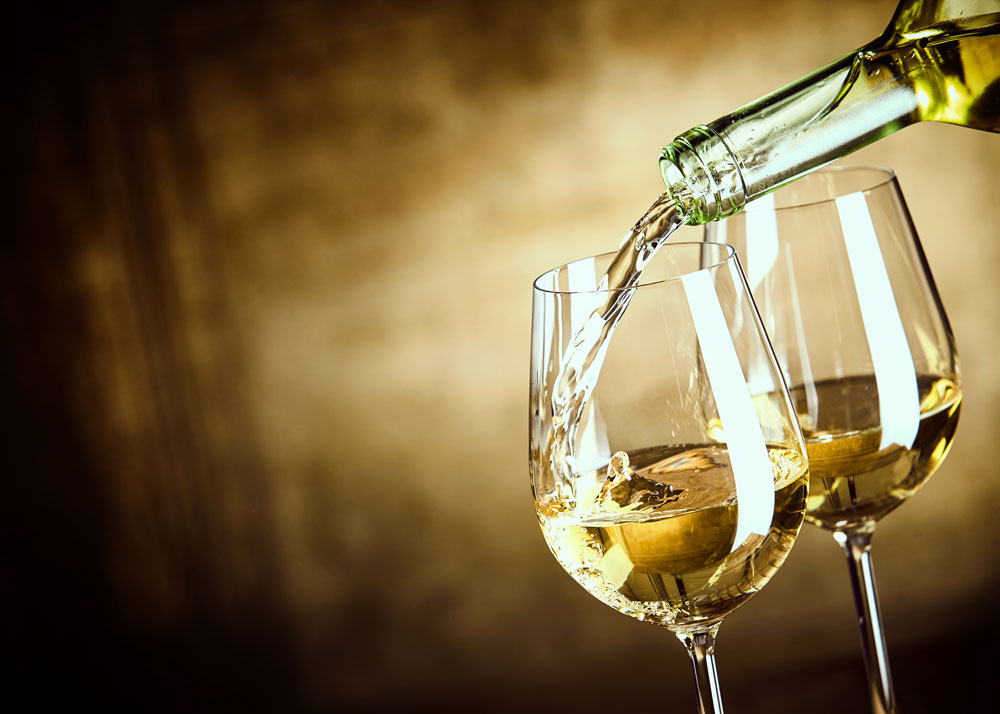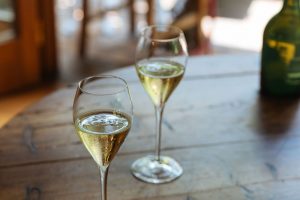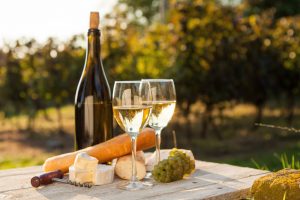Whether you’re new to wine and getting to know the main grapes for the first time or a lifelong connoisseur looking to deepen your appreciation, comparison tastings are both incredibly informative and enjoyable. What better way to gain insight into the Chardonnay grape than to taste several examples side by side, blind, with friends? This post will help you to host your friends for a fun event and learn something at the same time.
Before You Start
For details on hosting a blind tasting in general, see our previous article on the subject. For this particular tasting, you’ll need to make a list of Chardonnay categories to include to be sure that you have a broad spectrum of styles and don’t end up with too many duplicates. Also, make sure you have enough wine glasses, a spit bucket, and brown bags or foil to cover the labels. If you’re hosting friends and family, you can assign a wine to each of them. For example, one person can be in charge of bringing a bottle of Chablis, while another finds a Napa Chardonnay. I’ll go into detail about the wines later in the post. When all the bottles arrive, you can hide their labels and put them in the same place so that their serving order is randomized.
Champagne
Chardonnay is not only among the world’s most popular white wines; it’s also a main component in sparkling wine production for places like Champagne. In fact, some Champagne is made exclusively from Chardonnay. These bottles are labeled “Blanc de Blancs” and including one will broaden the understanding of what Chardonnay can be while adding excitement and variety to your tasting.
Chablis
Chardonnay from the French village of Chablis in northern Burgundy is among the most prestigious in the world, leading opportunistic American wineries to appropriate the name in the twentieth century for their own whites. True bottlings of Chablis come exclusively from the Chablis area and are made only from Chardonnay. Chablis lies near the northern extreme of viticulture in Europe, often struggling to ripen their grapes fully before harvest. The result is wine with bright acidity and relatively low alcohol. Chablis tends to be only lightly oaked, if at all, and features flavors of tart citrus and green apple. A bottle of Chablis at your tasting will provide an Old World context and show Chardonnay at its brightest and most refreshing.
Oaky Napa Valley Chardonnay
An iconic American style of wine, oaky, buttery, Chardonnay has remained a top seller for decades. Unlike most of the world’s white wine, which receives very little oak treatment, classic Napa Chardonnay may be fermented or aged in oak barrels – sometimes both – leading to deep flavors of fresh melted butter, toasted almond, nutmeg, caramel, butterscotch, movie theater popcorn, vanilla, and coconut. These wines tend to be a little polarizing – many people love them dearly, while others refuse to even smell them. I personally don’t see why one should have to choose between styles of Chardonnay – I love them all. When choosing a Napa Chardonnay, pay attention to the label and technical information. Some California wineries are producing Chardonnay in a more restrained style with no oak at all. Look for terms like “oaky” in the description and especially for confirmation that the wine was “barrel fermented” or “oak aged.” A further sign that a wine displays heavy oak flavors might be the term “new oak.” New oak barrels add more flavor to wine than older ones.
Santa Barbara Chardonnay
The southern California region of Santa Barbara is counterintuitively quite cool because of winds from the Pacific. Chardonnay from the area is especially delicious and shows a wide variety of styles and winemaking techniques. They generally fall somewhere in between the big, oaky wines of Napa, and the lighter, crisp wines of Chablis. A bottle from Santa Barbara will provide further context to your tasting. You don’t need to be too choosy about which bottle you get. The climate of Santa Barbara is the defining characteristic here, rather than the winemaking.
Southern Hemisphere Wildcard
For a final bottle, find something from the southern hemisphere as a surprise wildcard. Great Chardonnay is produced in every major wine country, from South Africa to New Zealand, with a wide diversity of results. It’ll be fun to see what Chardonnay can be when it ventures far afield from its iconic homes in France and California. Hopefully, you’ll end up with a surprising wine that you’ll love.
Have Fun
I’m sure you and your guests will end up with favorites over the course of your tasting, but don’t let yourself get fixated on the competition between bottles. You may find that even the wines you like the least are still interesting and provide, by comparison, an even greater appreciation for your top pick. Chardonnay is among the most diverse and varied wines in the world, and this little glimpse into the vast array available might end up being one of the highlights of your year as a wine lover.







